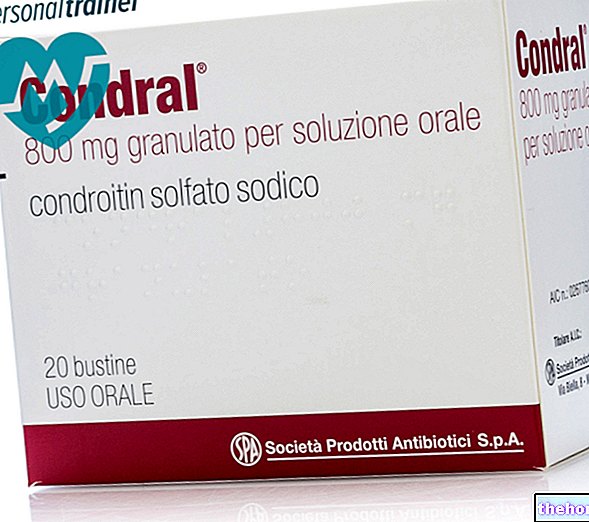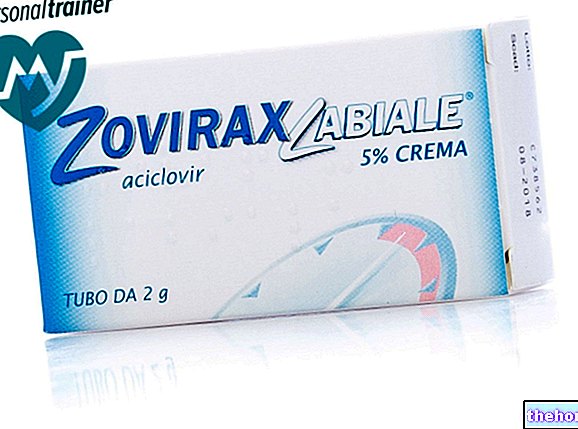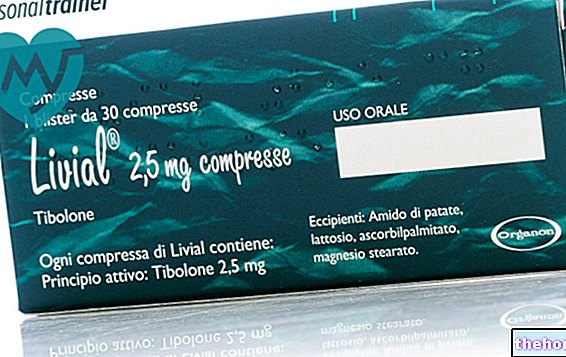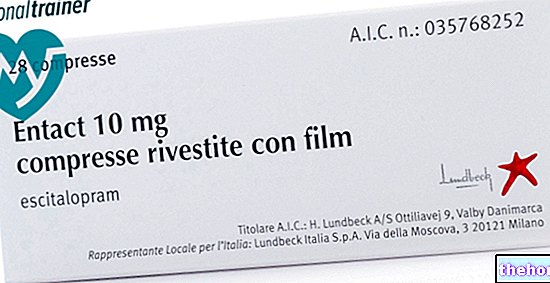Active ingredients: Ketoconazole
NIZORAL20 mg / g shampoo
Package inserts of Nizoral are available for pack sizes:- NIZORAL20 mg / g shampoo
- NIZORAL 2% cream
Why is Nizoral used? What is it for?
NIZORAL contains an active ingredient called ketoconazole, which belongs to a group of drugs that cause the death of fungi, called antifungals. Like other shampoos, NIZORAL also contains other ingredients that are used to clean the hair.
NIZORAL shampoo is used against infections on the scalp due to a fungus (yeast) called Malassezia. This fungus is found on everyone's skin, but it can sometimes cause problems such as:
- dandruff;
- dry or oily peeling of the skin, called seborrheic dermatitis.
These conditions can cause itching.
Contraindications When Nizoral should not be used
Do not use NIZORAL
if you are allergic to the active substance or any of the other ingredients of this medicine (listed in section 6).
Precautions for use What you need to know before taking Nizoral
Talk to your doctor or pharmacist before using NIZORAL if:
- is elderly;
- have liver problems;
- has used in the past medicines containing griseofulvin, which are used to kill fungi.
Take care with NIZORAL shampoo
- If you are using a lotion or cream that contains a corticosteroid (for example betamethasone or hydrocortisone) on your scalp: keep applying a small amount of the lotion or cream that contains the steroid; gradually decrease this amount during the first 2 - 3 weeks of treatment with NIZORAL shampoo; after 2-3 weeks only use NIZORAL. This will ensure that your symptoms do not get worse before NIZORAL begins to take effect.
- Avoid contact with eyes. If this happens, rinse your eyes with plenty of cold water.
Like other medicines for local (topical) use, especially in case of prolonged therapy, NIZORAL shampoo can cause redness and itching (sensitization phenomena). If this happens, stop the treatment and contact your doctor.
Children and adolescents
NIZORAL shampoo can be used in adolescents over 12 years of age.
Interactions Which drugs or foods may change the effect of Nizoral
Tell your doctor or pharmacist if you are taking, have recently taken or might take any other medicines.
Warnings It is important to know that:
Pregnancy, breastfeeding and fertility
If you are pregnant, think you may be pregnant or are planning to have a baby, or if you are breast-feeding, you can use NIZORAL. However, ask your doctor or pharmacist for advice before using this medicine.
Driving and using machines
NIZORAL does not affect the ability to drive and use machinery
Dose, Method and Time of Administration How to use Nizoral: Posology
Always use this medicine exactly as described in this leaflet or as directed by your doctor or pharmacist. If in doubt, consult your doctor or pharmacist.
Adults and adolescents over 12 years of age
Use NIZORAL shampoo 2 times a week for 2-4 weeks.
How to use
Wash your hair with NIZORAL; a small amount of shampoo is enough to create a copious lather on the scalp; let the shampoo act for 3-5 minutes, then rinse thoroughly.
Do not exceed the dose of NIZORAL and do not apply it more frequently than indicated above. Contact your doctor if you do not notice any improvement or if you notice worsening of your symptoms.
If NIZORAL comes into contact with the eyes: rinse your eyes with plenty of cold water.
Overdose What to do if you have taken too much Nizoral
If you use more NIZORAL than you should
you may notice redness and / or the appearance or worsening of itching on the scalp.
In case of accidental ingestion of NIZORALshampoo, do not try to make yourself vomit: notify your doctor immediately or go to the nearest hospital, as appropriate measures may be necessary.
If you forget to use NIZORAL
If you forget to take a treatment, do not use a double dose to make up for the forgotten.
If you have any further questions on the use of this medicine, ask your doctor or pharmacist.
Side Effects What are the side effects of Nizoral
Like all medicines, this medicine can cause side effects, although not everybody gets them.
Tell your doctor if while using NIZORAL shampoo you notice:
Uncommon side effects (may affect up to 1 in 100 people)
- redness, itching and burning due to scalp irritation;
- burning or more or less sudden onset of skin lesions, such as spot or diffuse color changes (rash) also due to inflammation of the hair follicles (folliculitis);
- increased lacrimation;
- alteration of hair structure, loss of hair patches (alopecia);
- dry skin.
- eye irritation;
- acne, skin inflammation (dermatitis), exfoliation or skin infections with pus (pustules) or other skin disorders;
- changes in taste;
- allergic reactions including redness, itching and burning of the skin and / or scalp, with possible swelling of the face, eyes, throat and breathing difficulties.
Other side effects (frequency of which has not been established)
- urticaria;
- hair color changes;
- swelling of the face, eyes, lips, tongue and throat with difficulty in breathing (angioedema).
Reporting of side effects
If you get any side effects, talk to your doctor or pharmacist. This includes any possible side effects not listed in this leaflet. You can also report side effects directly via the national reporting system at “www.agenziafarmaco.gov.it/it/responsabili.” By reporting side effects you can help provide more information on the safety of this medicine.
Expiry and Retention
Keep this medicine out of the sight and reach of children.
Store at a temperature not exceeding 25 ° C.
Do not use this medicine after the expiry date which is stated on the package. The expiry date refers to the last day of that month. This date is intended for the product in intact packaging, correctly stored.
Do not throw any medicines via wastewater or household waste. Ask your pharmacist how to throw away medicines you no longer use. This will help protect the environment.
Composition and pharmaceutical form
What NIZORAL contains
The active ingredient is: ketoconazole.
One gram of NIZORAL shampoo contains: 20 mg of ketoconazole.
The other ingredients are: sodium lauryl ether sulfate; disodium lauryl semisulfosuccinate; coconuthyldiethanolamide; hydrolyzed laurdimonium (animal collagen); macrogol 120 methylglucose dioleate; scent; imidazolidinylurea; hydrochloric acid; sodium chloride; sodium hydroxide; erythrosine; purified water.
Description of the appearance of NIZORAL and contents of the pack
NIZORAL shampoo is available in an 80 ml bottle.
Source Package Leaflet: AIFA (Italian Medicines Agency). Content published in January 2016. The information present may not be up-to-date.
To have access to the most up-to-date version, it is advisable to access the AIFA (Italian Medicines Agency) website. Disclaimer and useful information.
01.0 NAME OF THE MEDICINAL PRODUCT
NIZORAL 20 MG / G SHAMPOO
02.0 QUALITATIVE AND QUANTITATIVE COMPOSITION
One gram of Nizoral shampoo contains:
Active ingredient: Ketoconazole 20.00 mg
For the full list of excipients see section 6.1
03.0 PHARMACEUTICAL FORM
Shampoo for topical application on the scalp and skin
04.0 CLINICAL INFORMATION
04.1 Therapeutic indications
Treatment of scalp infections involving yeast Malassezia (formerly called Pityrosporum), such as localized seborrheic dermatitis (pityriasis versicolor) and pityriasis capitis (dandruff).
04.2 Posology and method of administration
Wash the affected areas with NIZORAL shampoo and leave for 3-5 minutes before rinsing.
Treatment:
• dandruff: 2 times a week for 2-4 weeks
• seborrheic dermatitis: twice a week for 2-4 weeks
Nizoral shampoo can be used by adults and adolescents.
04.3 Contraindications
Hypersensitivity to the active substance or to any of the excipients.
04.4 Special warnings and appropriate precautions for use
To prevent the rebound effect after discontinuation of prolonged treatment with topical corticosteroids, it is recommended to continue the application of a light amount of corticosteroids and gradually reduce it until the application of corticosteroids is discontinued over a period of 2-3 weeks.
Given the poor percutaneous absorption of ketoconazole, no systemic side effects are to be expected following the use of the product, nevertheless elderly patients, those with a history of liver disease and those previously treated with griseofulvin, should be treated with great caution. treatment if signs suggestive of a hepatic reaction develop.
The use, especially if prolonged, of the product can give rise to sensitization phenomena; in this case it is necessary to interrupt the treatment and consult the attending physician.
If the product comes into contact with the eyes, rinse well with water.
04.5 Interactions with other medicinal products and other forms of interaction
No interaction studies have been performed.
04.6 Pregnancy and lactation
There are no adequate clinical studies in pregnant or lactating women. After topical application of Nizoral Shampoo 2% on the scalp of non-pregnant women, plasma concentrations of ketoconazole are not detectable. Plasma levels are determined on the whole body after topical application of Nizoral Shampoo 2%. There are no known associated risks with the use of Nizoral Shampoo 2% during pregnancy and breastfeeding.
04.7 Effects on ability to drive and use machines
NIZORAL shampoo does not affect the ability to drive or use machines.
04.8 Undesirable effects
The safety of Nizoral Shampoo 2% was evaluated in 2890 subjects who participated in 22 clinical studies. Nizoral Shampoo 2% was administered topically to the scalp and / or skin. Based on the safety data collected during these clinical studies, no adverse reactions with an incidence ≥1% were reported.
The table below lists the adverse reactions that have been reported following the use of Nizoral 2% shampoo both during clinical trials and during post-marketing experience. The frequencies are reported according to the following conventional classification:
Very common (≥1 / 10); Common (≥1 / 100 e
04.9 Overdose
There are no known cases of overdose.
Poor percutaneous absorption of the drug makes overdose symptoms and signs unlikely. In case of accidental ingestion, take supportive and symptomatic measures; to avoid aspiration of the product, do not induce vomiting and do not perform gastric lavage.
05.0 PHARMACOLOGICAL PROPERTIES
05.1 Pharmacodynamic properties
Pharmacotherapeutic group: Antifungals for dermatological use ATC: D01AC
Ketoconazole is an imidazoldioxolane derivative with powerful antifungal activity against dermatophytes such as Trichophyton sp., Epidermophyton sp., Microsporum sp. and yeasts such as Candida sp. and Malassezia furfur (Pityrosporum ovale).
Nizoral shampoo quickly relieves itching and flaking that are usually associated with localized seborrheic dermatitis (pityriasis versicolor) and pityriasis capitis (dandruff).
05.2 Pharmacokinetic properties
Percutaneous absorption of Nizoral shampoo is negligible since its presence in the blood is not detected even after chronic treatment.
05.3 Preclinical safety data
Non-clinical safety data reveal no special hazards for humans and are based on conventional studies including eye and dermal irritation, dermal sensitization, repeated dose dermatological toxicity.
06.0 PHARMACEUTICAL INFORMATION
06.1 Excipients
Sodium lauryl ether sulfate; disodium lauryl semisulfosuccinate; coconuthyldiethanolamide; hydrolyzed laurdimonium (animal collagen); macrogol 120 methylglucose dioleate; scent; imidazolidinylurea; hydrochloric acid; sodium chloride; sodium hydroxide; erythrosine; purified water.
06.2 Incompatibility
Not relevant.
06.3 Period of validity
3 years.
06.4 Special precautions for storage
Store at a temperature not exceeding 25 ° C.
06.5 Nature of the immediate packaging and contents of the package
80 g bottle.
High density polyethylene bottle with screw cap of the same material.
06.6 Instructions for use and handling
No special instructions.
The unused product and the waste derived from this medicine must be disposed of in accordance with the legal requirements.
07.0 MARKETING AUTHORIZATION HOLDER
Johnson & Johnson SpA
Via Ardeatina km 23,500 00040 Santa Palomba Pomezia ROME
08.0 MARKETING AUTHORIZATION NUMBER
AIC N °: 024964138
09.0 DATE OF FIRST AUTHORIZATION OR RENEWAL OF THE AUTHORIZATION
1/12/1989
10.0 DATE OF REVISION OF THE TEXT
July 2013























-nelle-carni-di-maiale.jpg)




